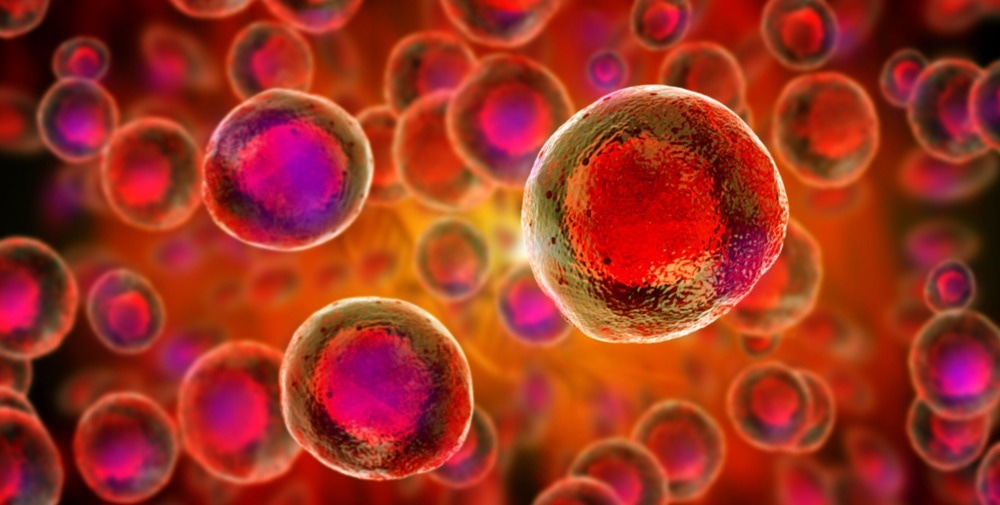Ordered topography is a desirable property in smart wearables and biological electronics that utilize brush shearing technology (BST). Despite its facile operation and large-scale ability, BST could not realize efficient nanomaterial processing due to size mismatch between microscale brushed units and nanoscale building blocks.

Study: A Nanobrush-Shearing Strategy Enabling the Alignment of 1D Nanomaterials for Synchronous Electrochromic Actuators and Controlled Growth of Neural Stem Cells. Iamge Credit: Giovanni Cancemi/Shutterstock.com
An article published in the journal Materials Today Nano presented nanobrush-shearing technology (NBST) as a promising strategy to tailor the assembly of nanomaterials by regulating the applied shear forces on the brushed units. The nanobrushes used in the present work were films and yarns with parallel nanoscale building blocks, utilized as oleophilic or hydrophilic nanobrushes based on their wetting properties.
Besides aligned and cross-aligned morphologies, the NBST strategy was applied in directional cell growth and electrochromic actuators. Aligned silver nanowires (Ag NWs) influenced the growth of neural stem cells at the stage of proliferation and differentiation, demonstrating the NBST’s tuning ability in nerve tissue regeneration.
Thus, the present work showcased the advantages of the NBST strategy in realizing the assembly of various nanomaterials to meet the challenges in printed electronics, nano bioengineering, and many more.
Nanomaterials and Their Applications
Well-defined surface topology and geometric symmetry in one-dimensional (1D) nanomaterials provide outstanding electrical and optical properties in wearable devices and high-performance semiconductor chips.
1D nanomaterials are being extensively used in novel wearable conductors, sensors, and energy devices due to their high aspect ratio that enables the construction of a conductive percolation network with a small amount of material usage while maintaining high optoelectronic performance.
The 1D nanomaterials offer unique properties such as high transparency, high sensitivity, lightweight, extreme thinness, low cost, and potential for large area fabrication. Although several methods were reported for efficient processing of 1D nanomaterials, there are no reports to date that could achieve the alignment of nanomaterials with the advantages of conventionally processed 1D nanomaterials.
BST has advantages, including roll-to-roll compatibility, high throughput, and minimal material waste. The technique’s potential to manufacture various functional dispersion or solutions led to developing two-dimensional (2D) nanomaterials dispersion and perovskite solution.
Despite its efficiency in processing nanomaterials, BST does not hold well in processing 1D nanomaterials. This is due to the size mismatch between microscale brush hairs and nanoscale building blocks, prohibiting the transfer of shear forces generated by nanomaterials’ shear movement.
Neural stem cells self-renew and give rise to neurons, astrocytes, and oligodendrocytes. These cells hold great promise for neural repair after injury or disease. The physical or mechanical forces applied during cell differentiation and proliferation determine the cell shape, an essential aspect of cell development and physiology.
Alignment of 1D Nanomaterials via NBST Strategy
Previously, the BST-based process was reported for the alignment of Ag NWs via the regulation of three-phase contact lines, resulting in nanowires that were not evenly arranged or highly aligned. Although blade-shearing at the microscale level was utilized with finite-size and interface effects to regulate the arrangement of 1D nanomaterials, this strategy was limited by the complicated and expensive manufacturing process.
Previous reports mentioned that reducing the width of the trench generates a strong unidirectional force field facilitating the alignment of 1D nanomaterials. Consequently, a hypothesis was drawn based on nanoscale gaped brush configurations that could tune the direction of various nanomaterials.
Accordingly, in the present study, the NBST strategy was used to realize an ordered pattern of Ag NWs, tellurium (Te) NWs, hydroxyapatite NWs, molybdenum oxide (MoO3) NBs, V2O5 NBs, carbon nanotubes (CNTs), and conjugated polymer poly(3-hexylthiophene) (P3HT), confirming the versatility of NBST technology.
In the NBST strategy, the hydrophilic and oleophilic nanobrushes sheared various nanomaterials in different solvents. Wetting behavior along with the nanoconfinement effect of the nanobrushes promoted uniform and ordered patterns of nanomaterials, demonstrating NBST as a promising strategy to realize the ordered arrangement of smaller building blocks like nanomaterials.
The shear force influenced the axial movement of the nanobrush, making NWs along the moving direction. However, the amount of absorbed solvent within the nanobrushes also influenced the direction of NWs alignment.
Among the two types of nanobrushes used in this work (film and yarn), the yarn type had denser morphology than the film type due to their twist preparation that reduced the internal porosity, indicating that the nanobrushe’s compactness was also a critical factor that influenced the arrangement of NWs.
Conclusion
To conclude, the NBST strategy based on multiple hydrophilic and oleophilic nanobrushes was introduced through the present work to combat the limitations of brushes with micron hairs in terms of their inability to achieve the ordered arrangement of smaller building blocks, like nanomaterials.
The NBST strategy was adopted to align conjugated polymers and 1D nanomaterials. Additionally, the application of the NBST strategy for synchronous electrochromic actuators and directional growth of neural stem cells was demonstrated, suggesting the potential of the present technique in regenerating nerves and military camouflage.
Reference
Li, L et al. A Nanobrush-Shearing Strategy Enabling the Alignment of 1D Nanomaterials for Synchronous Electrochromic Actuators and Controlled Growth of Neural Stem Cells. Materials Today Nano. https://www.sciencedirect.com/science/article/pii/S2588842022000840?via%3Dihub
Disclaimer: The views expressed here are those of the author expressed in their private capacity and do not necessarily represent the views of AZoM.com Limited T/A AZoNetwork the owner and operator of this website. This disclaimer forms part of the Terms and conditions of use of this website.